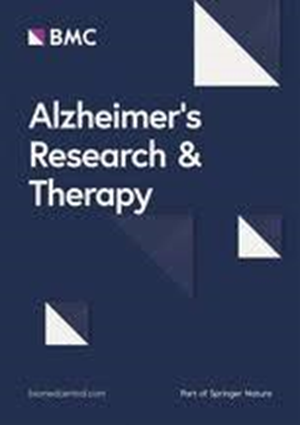快速进展性路易体痴呆症的临床、神经病理学和分子特征:一个独特的临床病理学实体?
IF 7.9
1区 医学
Q1 CLINICAL NEUROLOGY
引用次数: 0
摘要
快速进展性痴呆(RPD)伴路易体(rpDLB)一词用于指发生快速进展性神经综合征且存活率降低的 DLB 患者。在这里,我们描述了一个大型 rpDLB 神经病理学系列的临床、神经病理学和分子特征。我们纳入了2003年至2022年期间送往我们的朊病毒病转诊中心的所有病程小于4年的路易体病理(LBP)患者,这些患者的主要神经病理诊断为边缘或新皮质阶段的路易体病理(LBP),没有导致病情迅速恶化的全身性疾病,并且之前没有神经功能损害。研究人员检索了这些患者的临床特征,并将其与克雅氏病(CJD)和快速进展性阿尔茨海默病(rpAD)患者进行了比较。我们对 rpDLB 患者的神经病理学和遗传学(全外显子组测序、APOE 基因分型和 C9orf72 重复扩增分析)特征进行了系统研究。我们对rpDLB患者和作为对照组的典型长效路易体病(LBD)伴痴呆患者不同脑区的脑脊液(CSF)和10倍序列稀释的脑匀浆进行了半定量LBP负荷评分和α-突触核蛋白(αSyn)RT-QuIC播种扩增试验(SAA)。与 CJD 患者相比,RpDLB 患者年龄更大(p = 0.047),表现出更多的认知波动(p = 0.005)、视幻觉(p = 0.020)、神经精神症状(p = 0.006)和癫痫发作(p = 0.032),而小脑(p < 0.001)和视觉(p = 0.004)体征较少。谵妄的发病率高于CJD(p < 0.001)和rpAD(p = 0.008)。非典型枸杞多糖体征(锥体、肌阵挛、运动性缄默症)很常见。所有受检患者的脑脊液αSyn SAA均呈阳性。合并病症很常见,只有四例表现为相对 "单纯 "的枸杞多糖症。通过 αSyn RT-QuIC SAA 测量的枸杞多糖负荷和 αSyn 播种活性在 rpDLB 患者和典型枸杞多糖患者之间没有显著差异。我们在一名患者的 GBA 中发现了一个可能的致病变体。我们的研究结果表明1)rpDLB 表现出独特的临床特征(2)CSF αSyn SAA 是一种可靠的诊断测试;3)rpDLB 是一种异质性的神经病理学实体,既可能是广泛的单纯 LBP,也可能是多种共同病理 4)rpDLB 很可能不是由独特的 αSyn 构象株维持的;5)遗传缺陷至少偶尔会导致这些患者预后不良。本文章由计算机程序翻译,如有差异,请以英文原文为准。
Clinical, neuropathological, and molecular characteristics of rapidly progressive dementia with Lewy bodies: a distinct clinicopathological entity?
The term rapidly progressive dementia (RPD) with Lewy bodies (rpDLB) is used for DLB patients who develop a rapidly progressive neurological syndrome and have reduced survival. Here, we characterise the clinical, neuropathological, and molecular characteristics of a large rpDLB neuropathological series. We included all RPD patients with a disease duration < 4 years submitted to our prion disease referral centre between 2003 and 2022 who showed Lewy body pathology (LBP) in limbic or neocortical stages as primary neuropathological diagnosis, had no systemic condition justifying the rapid deterioration and were previously neurologically unimpaired. Clinical features were retrieved and compared with Creutzfeldt-Jakob disease (CJD) and rapidly progressive Alzheimer’s disease (rpAD) cohorts. Neuropathological and genetic (whole exome sequencing, APOE genotyping, and C9orf72 repeat expansion analysis) characteristics of rpDLB patients were systematically investigated. We scored semi-quantitatively the LBP load and performed a α-synuclein (αSyn) RT-QuIC seeding amplification assay (SAA) on cerebrospinal fluid (CSF) and tenfold serially diluted brain homogenates from different brain areas in rpDLB patients and typical long-lasting Lewy body disease (LBD) with dementia patients as control group. RpDLB patients were older (p = 0.047) and presented more cognitive fluctuations (p = 0.005), visual hallucinations (p = 0.020), neuropsychiatric symptoms (p = 0.006) and seizures (p = 0.032), and fewer cerebellar (p < 0.001) and visual (p = 0.004) signs than CJD ones. Delirium onset was more common than in both CJD (p < 0.001) and rpAD (p = 0.008). Atypical LBD signs (pyramidal, myoclonus, akinetic mutism) were common. All tested patients were positive by CSF αSyn SAA. Concomitant pathologies were common, with only four cases showing relatively “pure” LBP. LBP load and αSyn seeding activity measured through αSyn RT-QuIC SAA were not significantly different between rpDLB patients and typical LBD. We found a likely pathogenic variant in GBA in one patient. Our results indicate that: 1) rpDLB exhibits a distinct clinical signature (2) CSF αSyn SAA is a reliable diagnostic test; 3) rpDLB is a heterogeneous neuropathological entity that can be underlain by both widespread pure LBP, or multiple copathologies 4) rpDLB is likely not sustained by distinct αSyn conformational strains; 5) genetic defects may, at least occasionally, contribute to the poor prognosis in these patients.
求助全文
通过发布文献求助,成功后即可免费获取论文全文。
去求助
来源期刊

Alzheimer's Research & Therapy
医学-神经病学
CiteScore
13.10
自引率
3.30%
发文量
172
审稿时长
>12 weeks
期刊介绍:
Alzheimer's Research & Therapy is an international peer-reviewed journal that focuses on translational research into Alzheimer's disease and other neurodegenerative diseases. It publishes open-access basic research, clinical trials, drug discovery and development studies, and epidemiologic studies. The journal also includes reviews, viewpoints, commentaries, debates, and reports. All articles published in Alzheimer's Research & Therapy are included in several reputable databases such as CAS, Current contents, DOAJ, Embase, Journal Citation Reports/Science Edition, MEDLINE, PubMed, PubMed Central, Science Citation Index Expanded (Web of Science) and Scopus.
 求助内容:
求助内容: 应助结果提醒方式:
应助结果提醒方式:


